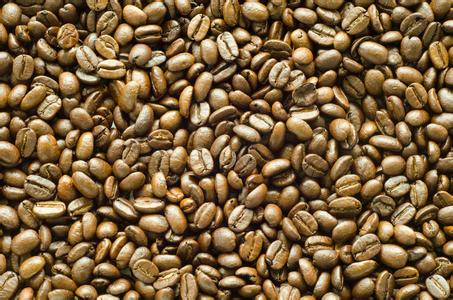What's the difference between Huangbo and Hongbo coffee beans? A brief introduction to the description of baking degree flavor
Coffee for drinking is said to have begun at the beginning of the eleventh century, and the record can be seen in ancient Arab documents. Before that, coffee beans were dried and boiled in the Arab region and then drank as stomach medicine, but it was later learned that coffee also had a refreshing effect, coupled with the strict Muslim commandments that forbade believers from drinking alcohol. Believers drank coffee juice from roasting as an exciting drink instead of alcohol. It is said that locals know how to roast raw beans and use them after the 13th century.
Coffee was planted in large numbers by Arabs in the 12th and 3rd centuries, and the world's first coffee shop was born in Damascus in the Middle East in the 16th century (1530). In just a few years, there were different numbers of coffee shops in more than 200 cities throughout the empire, from the ancient Constantinople to the Caucasus, from the Persian Gulf to Budapest, and the roads connecting these cities across the desert wilderness were dotted with mobile coffee tents to serve a steady stream of business travelers and troops. Coffee also spread to Europe in the same century, when coffee was taken to western countries with the Turks on a western expedition to Austria. Unexpectedly, it soon captured the hearts of Europeans. According to records, a packet of samples sent from Venice to the Netherlands in 1596 was the earliest coffee bean seen by Europeans north of the Alps. Legend has it that coffee was so rare in Western Europe that at first there was a joke that German housewives used chicken soup to make coffee. According to scholars' speculation, in the prosperous import and export trade of seasoning raw materials at the end of the 16th century, many coffee beans from the east began to enter Europe through Venice with developed economy and trade.
The most sensible and practical way to understand coffee-producing countries is to classify them into the world's three major coffee growing regions: Africa, Indonesia and Central and South America. Generally speaking, coffee grown in the vicinity has similar characteristics. If a particular bean is out of stock, the manufacturer and buyer of the comprehensive product will usually look for a nearby country. The comprehensive product maker will say: I want to use a "medium" one. This means light, delicious, vibrant Central American beans. Or maybe it would be more interesting to add "Africa". Africa is a land full of game beans; for example, "Indonesia" is used as the foundation. Because no other bean has such a powerful and full taste.

Important Notice :
前街咖啡 FrontStreet Coffee has moved to new addredd:
FrontStreet Coffee Address: 315,Donghua East Road,GuangZhou
Tel:020 38364473
- Prev

How to clean coffee with filter-hand coffee filter after grinding
After coffee grinding, how to use filter screen-hand coffee filter to clean the corresponding relationship between the grinding degree of coffee powder and various brewing methods, on the whole, it takes a longer time to make coffee powder, that is, the degree of grinding required by the brewing method of coffee powder with longer contact time with water is usually thicker. The reason is that the finer the grinding degree of coffee powder is, the larger the contact area between coffee powder and water is, and the longer brewing time is.
- Next

Usage of coffee cloth powder-method of brewing coffee with coffee powder
Coffee cloth powder machine usage-using coffee powder to brew coffee ①, light pressure even with the weight of the cake hammer itself; ②, heavy pressure even with man-made external force. Due to too much artificial force, packing is one of the biggest factors in the whole process of ESPRESSO extraction, so experienced baristas choose ① to ensure the consistency of the product.
Related
- Beginners will see the "Coffee pull flower" guide!
- What is the difference between ice blog purified milk and ordinary milk coffee?
- Why is the Philippines the largest producer of crops in Liberia?
- For coffee extraction, should the fine powder be retained?
- How does extracted espresso fill pressed powder? How much strength does it take to press the powder?
- How to make jasmine cold extract coffee? Is the jasmine + latte good?
- Will this little toy really make the coffee taste better? How does Lily Drip affect coffee extraction?
- Will the action of slapping the filter cup also affect coffee extraction?
- What's the difference between powder-to-water ratio and powder-to-liquid ratio?
- What is the Ethiopian local species? What does it have to do with Heirloom native species?

